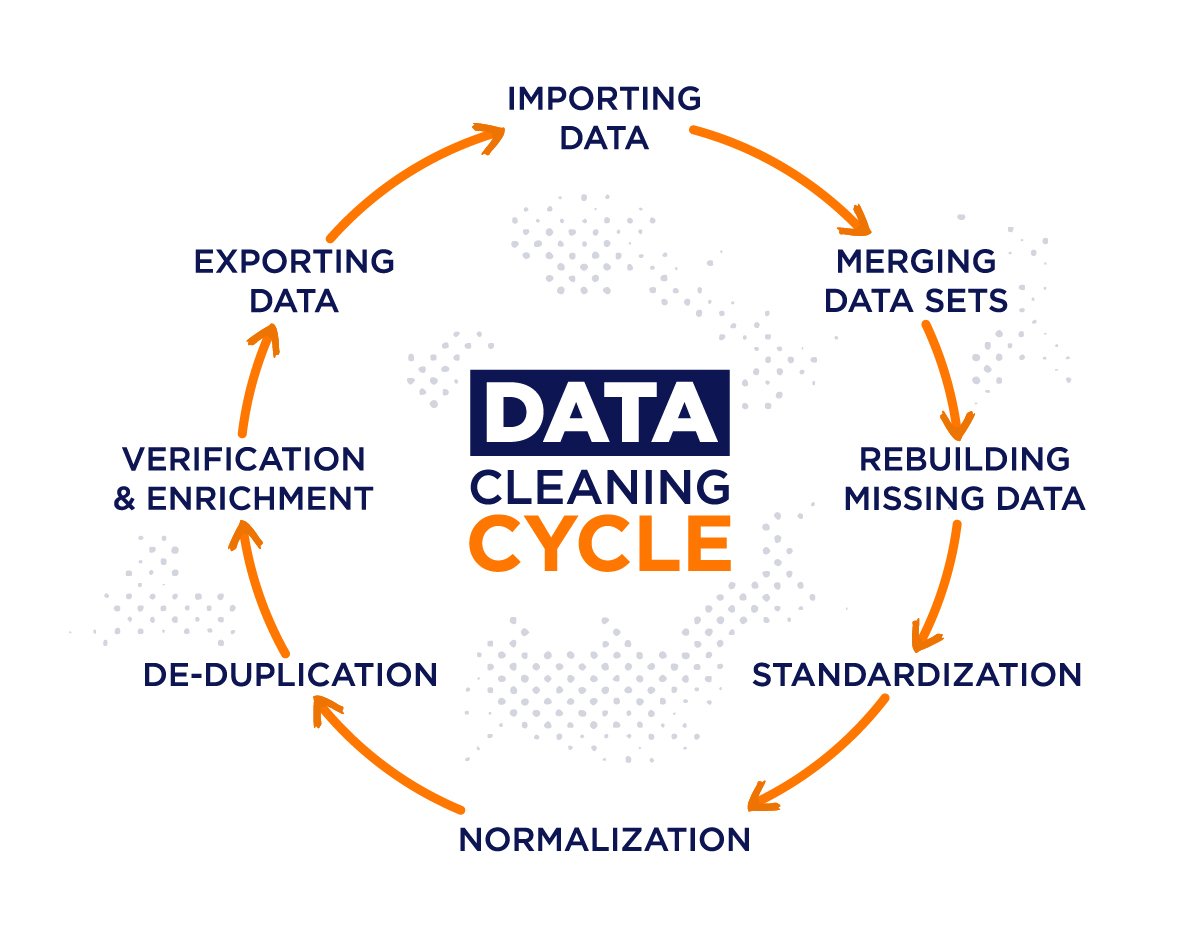The Different Types of Data Cleansing Tools

Welcome to the world of data cleansing! In today’s digital age, businesses rely heavily on data for their operations and decision-making. However, as valuable as data is, it is not always accurate or reliable. That’s where data cleansing comes in. Data cleansing tools play a crucial role in ensuring that your business has clean and trustworthy data at its fingertips. In this blog post, we will explore the different types of data cleansing tools available and how they can benefit your organization. So grab a cup of coffee (or tea), sit back, and let’s dive into the fascinating world of data cleansing tools!
What is Data Cleansing?
What is data cleansing? Simply put, it is the process of identifying and correcting or removing errors, inconsistencies, and inaccuracies in a dataset. This could include anything from typos and misspellings to duplicate entries or outdated information.
Data cleansing is essential because clean data ensures that businesses can make informed decisions based on accurate information. It helps improve data quality, increase operational efficiency, and enhance overall productivity. Imagine trying to analyze sales trends or customer behavior with incorrect or incomplete data – it would be like navigating through a dense fog!
So how does data cleansing work? Well, there are various types of tools available that can assist in this process. These tools use algorithms and techniques to identify anomalies within datasets. They can automatically detect duplicate records and merge them into a single entry for improved consistency.
Other tools focus on standardizing formats such as addresses or phone numbers to eliminate variations caused by human error. Additionally, some data cleansing tools employ validation rules to check the accuracy of specific fields against predefined criteria.
Data cleansing plays a vital role in maintaining the integrity of your business’s database. By ensuring that your information is accurate and up-to-date, you can trust that your decision-making processes will be sound and reliable. But enough about what it is – let’s move on to explore the different types of data cleansing tools at your disposal!
The Benefits of Data Cleansing
Data cleansing is a critical process that every organization should prioritize. By cleaning and maintaining the quality of their data, businesses can unlock numerous benefits that will contribute to improved decision-making, enhanced efficiency, and increased revenue.
One of the key benefits of data cleansing is improved accuracy. When your data is clean and free from errors, you can rely on it to make informed decisions with confidence. With accurate data at your disposal, you can better understand your customers’ needs and preferences, identify trends in your industry, and identify potential opportunities for growth.
Another advantage of data cleansing is increased productivity. Clean data means less time spent on manual processes such as searching for information or correcting errors. By automating these tasks through the use of data cleansing tools, employees can focus their efforts on more valuable activities like analyzing insights from clean data or developing innovative strategies.
Furthermore, proper data cleansing leads to cost savings. Inaccurate or duplicate records can result in wasted resources as businesses may send multiple communications to the same customer or invest in marketing campaigns targeting invalid email addresses or phone numbers. By eliminating these unnecessary expenses through effective data cleansing practices, companies can optimize their budgets and allocate funds towards other important initiatives.
Moreover, by ensuring that your database only contains up-to-date information about customers and prospects through regular data cleansing efforts prevents outdated contacts from negatively impacting communication efforts. This results in higher response rates for marketing campaigns which ultimately translates into a greater return on investment (ROI).
In conclusion,data cleansing offers several advantages for organizations aiming to achieve success in today’s competitive business landscape.
From improved accuracy and productivity to cost savings and enhanced communication,the benefits are undeniable.
Investing in reliable Data Cleansing Tools enables companies to harness the power of clean,dynamic,and actionabledata,resultingin smarter decision-making,strategic planning,and sustainable growth
The Different Types of Data Cleansing Tools
Data cleansing is a crucial process that ensures the accuracy and reliability of data by identifying and correcting any errors or inconsistencies. To accomplish this task, there are various types of data cleansing tools available in the market. These tools offer different functionalities and features to suit specific needs.
One type of data cleansing tool is the deduplication software. This tool helps eliminate duplicate records from databases, which can occur due to human error or system glitches. By removing duplicates, businesses can maintain a clean database and prevent issues such as sending multiple emails to the same customer.
Another type of tool is data parsing software. This tool breaks down complex datasets into smaller components for easier analysis. It helps extract relevant information from unstructured data sources like text files or PDFs, making it more manageable and usable.
Data standardization tools ensure consistency across all datasets by transforming inconsistent formats into standardized formats. For example, these tools can convert phone numbers into a standardized format regardless of how they were initially entered.
Furthermore, there are validation tools that help verify if the collected data meets certain criteria or conforms to predefined rules. These tools check for errors such as invalid email addresses or incorrect postal codes, ensuring accurate information capture.
Additionally, outlier detection tools identify anomalies within datasets by analyzing patterns and statistical models. They highlight any unusual values or outliers that may indicate errors in the dataset.
Quality monitoring tools continuously monitor new incoming data for potential errors and inconsistencies in real-time so that corrective actions can be taken promptly.
Different types of data cleansing tools offer unique functionalities suited for various aspects of cleaning and improving your organization’s dataset accuracy. Businesses should evaluate their specific needs before selecting an appropriate tool to achieve optimal results in their data cleaning efforts.
How to Use Data Cleansing Tools
How to Use Data Cleansing Tools
Using data cleansing tools is an essential part of maintaining accurate and reliable data. These tools help identify and correct errors, inconsistencies, duplicates, and outdated information within your dataset. Here are some steps on how to effectively use data cleansing tools:
1. Assess your data: Before diving into the cleansing process, it’s important to understand the current state of your data. Identify any common issues or patterns that need attention.
2. Choose the right tool: There are various types of data cleansing tools available in the market today. Evaluate different options based on their features, functionalities, ease of use, and compatibility with your existing systems.
3. Define cleaning criteria: Determine what specific rules or criteria should be applied during the cleaning process. For example, you may want to remove duplicate records based on certain fields or standardize formats for phone numbers or addresses.
4. Test before executing: It’s always a good idea to test the tool’s capabilities on a sample dataset before applying it to your entire database. This helps identify any potential issues or unexpected outcomes.
5. Execute the cleansing process: Once you’re confident in your chosen tool and its settings, run it on your complete dataset to clean up errors and inconsistencies systematically.
6. Review results: After completing the cleaning process, thoroughly review the results for accuracy and completeness. Ensure that all necessary changes have been made without introducing new errors.
7.
Track ongoing maintenance: Data quality is an ongoing effort; therefore, establish processes for regular monitoring and maintenance using these tools as needed.
By following these steps when using data cleansing tools effectively ensure that you can improve overall data quality while saving time and resources in managing large datasets.
Case Studies
Case Studies
To truly understand the power and effectiveness of data cleansing tools, let’s take a look at some real-life case studies where businesses have benefited from using these tools.
Case Study 1: Company X
Company X is a large e-commerce retailer with millions of customer records. Over time, their database became cluttered with duplicate entries and incorrect information. This led to issues such as missed sales opportunities and poor customer communication. By implementing a data cleansing tool, they were able to identify and merge duplicate records, update outdated information, and ensure accurate customer details. As a result, their sales team saw improved lead generation and conversion rates.
Case Study 2: Organization Y
Organization Y is a healthcare provider that relies heavily on patient data for delivering quality care. However, they noticed inconsistencies in their patient records which caused confusion during medical procedures. By using a data cleansing tool specifically designed for healthcare organizations, they were able to standardize patient information across all departments. This not only improved the efficiency of their operations but also enhanced patient safety by reducing errors.
These case studies highlight how different businesses can benefit from utilizing various types of data cleansing tools tailored to their specific needs. Whether it’s eliminating duplicates or ensuring accuracy in sensitive information like health records, these tools play a crucial role in optimizing business processes.
In conclusion,
Data cleansing tools are essential for maintaining accurate and reliable databases. The different types available cater to diverse industries and requirements – from e-commerce retailers to healthcare providers – making them versatile solutions for improving overall data quality. Incorporating these tools into your organization can bring significant benefits such as increased productivity, better decision-making capabilities, improved customer satisfaction, and ultimately drive business growth.
Conclusion
Data cleansing is an essential process for any organization that wants to ensure the accuracy and reliability of its data. By eliminating errors, inconsistencies, and redundancies, data cleansing tools help businesses maintain high-quality data that can be used for effective decision-making.
Throughout this article, we have explored what data cleansing is and the benefits it offers. We have also discussed the different types of data cleansing tools available in the market today.
From deduplication tools that identify and remove duplicate records to validation tools that verify the accuracy of information, there are a variety of options to choose from based on your specific needs. Whether you prefer using standalone software programs or cloud-based solutions, there is a tool out there for every business.
When it comes to using these tools effectively, following best practices such as conducting regular audits and establishing clear rules for data entry can significantly enhance their effectiveness. It’s important to remember that investing time and effort into maintaining clean and reliable data will pay off in the long run by improving customer satisfaction, increasing operational efficiency, and driving better business outcomes.
By adopting appropriate data cleansing measures tailored to your organization’s requirements, you can unlock numerous benefits while avoiding potential pitfalls associated with poor quality data.
In conclusion (without saying “In conclusion”), embracing the power of data cleaning tools should be an integral part of your overall Data Management strategy. With accurate and reliable information at your fingertips, you’ll gain a competitive edge in today’s rapidly evolving digital landscape. So don’t let dirty or incorrect data hold your business back; take action now with robust data cleansing solutions!




